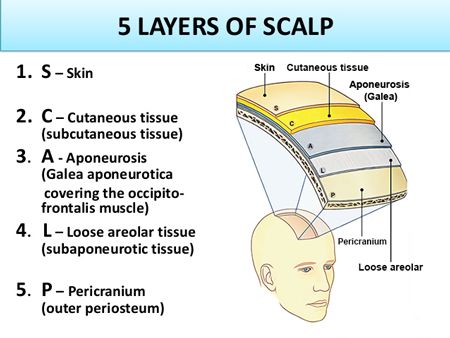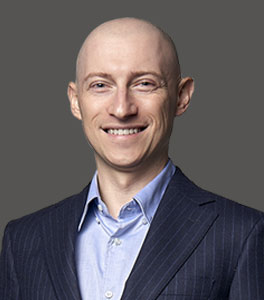

Forehead reduction is a surgical procedure that reduces the height of your forehead and balances the proportions of your face. Hairline lowering or advancement on the scalp, performed by the best-ranked plastic surgeon in New York Dr. Gary Linkov, can create a forehead reduction and improve the overall appearance of the face and hair. At City Facial Plastics, located in Midtown, Manhattan, we offer different options for lowering the hairline, depending on the individual.


Forehead reduction, or hairline lowering surgery, refers to a surgical procedure that shortens the forehead by removing upper forehead skin and therefore lowers the hairline. It is more common in women because of the stability of the forehead hairline compared to men who frequently experience hairline recession from male pattern baldness. While forehead reduction most often refers to a surgical hairline advancement, another option is a hair transplant to lower the hairline and reduce the forehead.
In traditional facial aesthetics, the face can be divided into vertical thirds, with the topmost boundary at the hairline. Ideally, the forehead hairline in women is 5-6cm above the eyebrow, and 6-8cm in men. Another landmark for the ideal hairline in men and women is the point where the scalp slopes from a horizontal to a more vertical orientation. Some men and women have high hairlines and are interested in forehead reduction to lower the hairline and improve facial proportions.
One of the quickest options for forehead reduction is scalp lowering. This involves a surgical movement of the scalp and hairline forward or lower on the forehead. This is best for “loose” scalps that can be surgically altered and is almost exclusively performed on women. This method is often preferred as It can bring the hairline forward up to two inches. It is equivalent to performing about 6,000 hair follicle grafts, all in one procedure.
Hair grafting, or transportation, can also be used for lowering the hairline. This is popular for both men and women with high or receding hairlines. Some women may not be good candidates for scalp lowering. This is if they just need their hairline rounded, have a tight scalp or have had brow lifts. They may consider hair transplants instead. We use FUE hair transplants utilizing advanced technology, for improved results.
Mainly for men, SMP is an option to lower the hairline and reduce the forehead. This is often used for men with shaved heads that want to extend their hair “shadow” further for a more youthful appearance.
Dr. Gary Linkov is a highly respected facial plastic surgeon and hair loss specialist in New York. To learn more about options for hairline lowering at City Facial Plastics in Manhattan’s Upper East Side, contact our office to schedule a consultation.
I highly recommend Dr. Linkov! I was looking for a doctor to try PRP treatments to stimulate hair growth. It was important for me to be treated by a true hair specialist and discuss realistic results. He was very personable and honest, with great bedside manner. Dr. Linkov was extremely knowledgeable and had great technique, I was never in any pain. Highly recommend him!
J R
The following characteristics may qualify someone for a forehead reduction, including:
Forehead reduction, by way of a surgical hairline advancement, involves manipulating layers of the scalp. The following is a summary of these layers, which will help the reader understand how a hairline lowering surgery is done.
Scalp Layers (superficial to deep):

During your initial consultation for a forehead reduction, a top-rated facial plastic surgeon in New York City, Dr. Linkov will discuss and evaluate the following important factors:
The general steps of a forehead reduction (hairline lowering surgery) when performed by the best-ranked plastic surgeon in NYC, Dr. Linkov as a surgical hairline advancement include:
As you can see, forehead reduction is a complex surgery that requires carefully coordinated steps to achieve natural and safe results.
Once you have decided to undergo a forehead reduction (forehead lowering surgery), an experienced facial plastic surgeon in NYC, Dr. Linkov will discuss in detail how to prepare for your surgery. There are a few steps you should take before your hairline lowering surgery to get the best results.
These steps include:
On the day of your hairline lowering surgery, it is important not to eat or drink 6 hours before. Surgery to make hairline lower is most often performed under deep sedation with an anesthesiologist, so there will be no pain during the procedure and you will have no recollection of the procedure. You will be asked to change into a surgical gown and women of child-bearing age will need to take a pregnancy test. The intake process can take about an hour, the surgery usually takes 2-3 hours, and recovery will be about another hour.
Recovery after forehead reduction surgery varies from person to person. There is a short-term healing phase that occurs in the first few days to weeks after hairline lowering surgery and a longer-term healing phase that occurs in the weeks to months after surgery. How long you will spend in each phase depends on a variety of personal factors.
The short term healing phase occurs in the first few days to weeks after surgery. Common, anticipated aspects of healing in the short term phase include:
There are several precautions you should take during the short term healing phase to ensure the best result and minimize bleeding.
Some of these precautions include:
The long term healing phase occurs in the weeks to months following your forehead reduction surgery. The amount of time each person will spend in the long term healing phase also varies on the individual’s personal health characteristics and the extent of the surgery that was performed. In general, you can expect to see final results about 1 year post-operatively. Your doctor will schedule you follow up appointments to monitor your progress. Occasionally, steroid injections are used to help control the healing of the frontal incision line. Hair can start to grow through the incision line as early as a few weeks after surgery.
The risks and complications of hairline surgery, include:
As you can see, many issues can arise from a forehead reduction. It is important to choose a surgeon who understands these potential problems and has strategies in place to avoid such complications.
There are patients who should avoid a forehead reduction, these include patients with the following:
The primary alternative to a hairline lowering forehead reduction, or surgical hairline advancement, is a hair transplant. To lower the hairline by about 2cm with a hair transplant alone, for example, at least 2000 grafts are typically required. It will take about one year to see the final result with a hair transplant and it is more challenging to create as much hairline density as one would see with a hairline lowering surgery. For these reasons many patients, if candidates, opt for this type of surgery.
Caitlyn Jenner is believed to have had a hairline lowering surgery. Whether it was performed with a hairline lowering advancement surgery or with a hair transplant is unclear. Forehead reduction is one of the many surgeries considered in facial feminization surgery.
Patients are generally highly satisfied after forehead reduction. Bringing the hairline down in a patient with a large forehead helps better frame the face and brings attention more to the eyes and other facial features.
The hairline lowering surgery cost is a combination of a surgeon’s fee, facility fee, and anesthesia fee. These are sometimes reported as a combined fee in certain offices and other times broken down into their components in other offices. The cost of forehead reduction or hairline lowering surgery will vary by location, surgeon experience, and demand, along with the anticipated complexity of the surgery.
Dr. Gary Linkov, a NYC hair restoration top-ranked expert, is a leading voice in hair restoration. He has advanced knowledge of underlying disease processes and is up-to-date on the latest therapies, offering his patients top of the line care with non-surgical and surgical solutions. He also has alopecia areata himself which allows him to empathize with his patients and deliver the most compassionate hair restoration care in NYC, from the heart. As a facial plastic and reconstructive surgeon, as well as a hair transplant surgeon, Dr. Linkov is able to properly assess your needs and deliver exceptional results.
Do you have any questions about forehead reduction in New York City? Would you like to schedule an appointment with an experienced facial plastic surgeon in Manhattan, NYC, Dr. Linkov? Please contact our City Facial Plastics office for a consultation. You can have the appearance you want with the best hairline lowering surgery options we offer.
Dr. Linkov is a great guy and is very knowledgeable. When it comes to FUE (including body hair transplant), it’s all about the experience of the doctor and technicians. Dr. Linkov has a very experienced team that allowed me to fully recover in 6 days.

Dr. Linkov is a double board-certified by the American Academy of Facial Plastic and Reconstructive Surgery and the American Board of Otolaryngology-Head & Neck Surgery. A native of New York, Dr. Linkov graduated as a salutatorian from Cornell University and received his Medical Degree at Columbia University College of Physicians and Surgeons. Dr. Linkov conducted advanced head and neck cancer research at the world-renowned Memorial Sloan Kettering Cancer Center. Dr. Linkov is a former Adjunct Assistant Professor at New York University (NYU), where he taught Rhinoplasty.
Dr. Linkov is a top-rated facial plastic surgeon in New York who specializes in lip lift, facelift, rhinoplasty, and hair transplant. He has been named one of the top 5 lip lift surgeons in the United States, is listed in the prestigious SuperDoctors New York™ registry, and has appeared on the Dr. Oz Show, where he discussed the state-of-the-art hair transplantation procedure.


City Facial Plastics 150 E 56th St, #1AB, New York, NY 10022 (212) 439-5177